This post is comprised of different sections
Take a look at our review of The Persistence of Memory!
Learn more about the illusion of time! Or check out the full explanation The Persistence of Memory Explained!
This post is comprised of different sections
Take a look at our review of The Persistence of Memory!
Learn more about the illusion of time! Or check out the full explanation The Persistence of Memory Explained!
Artist: Salvador Dalí
Year: 1931
Medium: Oil on canvas
Location: Museum of Modern Art (MoMA), New York City, U.S.A.
Dimensions: 24 cm × 33 cm (9.5 in × 13 in)
Original Title: La persistencia de la memoria

Our rating
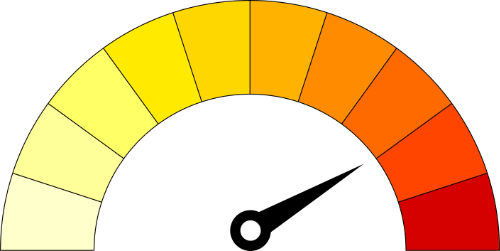
Your rating
I recently went to New York City for the very first time, and what an amazing experience that was!
Broadway for fantastic shows, Comedy Cellar for having a laugh, Central park for a joyful stroll, The Rock for amazing views, Liberty Island/Ellis Island for history… There is everything for everyone!
Being an art lover, I also couldn’t miss the opportunity to visit one of the most famous museums in the world: the Museum of Modern Art. I spent about 4 hours just on the 5th floor – it is packed with world-renown paintings from Vincent Van Gogh, Pablo Picasso, Rene Magritte, Max Ernst, Henri Matisse and many more.
If you have read some of my previous Art articles, you should know by now that I’m a huge fan of Dali’s works. Fortunately, Dali has a tiny presence in that museum as well. Well, tiny in size perhaps, because it is arguably the most famous of all surrealistic paintings: The Persistence of Memory.
It wasn’t hard to find the room where the painting was located. Setting aside the Starry Night by Vicent Van Gogh, the Persistence of Memory is probably the most famous painting in MoMa. Crowds of visitors enveloped the painting, making selfies with the painting (?), so I decided to wait until about an hour before MoMa closed and crowds dispersed to be able to examine this painting with care. I was surprised to find that the painting has unremarkable dimensions: it is only 24 cm (9.5 in) x 33 cm (13 in), about the size of the surface of a shoebox.
But what it lacks in size it makes up in detail.
The main motif of the painting is the melting clocks, which appear to have been based on Dali’s dreams. One red clock is actually not melting but rather being devoured by a colony of hungry ants. The mastery with which Dali painted the melting of the clocks really give it dynamism, as though we are able to visualise the clocks dripping.
The background desolated landscape contains some cliffs which are reminiscent of the rugged cliffs of Catalonia, Dali’s birthplace. The sunny weather and desert-like surface adds to the impression of the clocks melting in the torrid and scorching heat. Carefully examination reveals exquisite details of the cliffs, with different shades of yellow and superb reflections on the sea.
At the center we see an amorphous figure with eyes closed. Some have suggested it is a monster, some believe it is a human, others suggest that is Dali himself… dreaming.
The perspective of the monster is slightly awkward, although probably intentional. Its tail blends in with the terrain, perhaps to symbolize the ethereal world of dreams.
Being a huge fan of Dali, there is probably no painting of his that I dislike. The Persistence of Memory, however, doesn’t rank among my favourites. It’s certainly interesting, but I find some of the elements a bit weirdly placed. In my opinion, there are certainly paintings Dali which are much more infused with symbolism than the Persistence of Memory.
Of course, I cannot rule out that my feelings towards this painting may have been biased by the huge popularity it enjoys, with a somewhat overused presence in surrealistic conversations.
Here at Mindlybiz, The Persistence of Memory gets 3.5 stars.
Well, what do you expect from a Dali painting? Bizarre is surely a prerequisite. And The Persistence of Memory doesn’t disappoint. Dali included some clues in this painting that allows us to decipher its meaning, so even though bizarre it isn’t his most cryptic work.
The Persistence of Memory receives a bizarrometer score of 4.
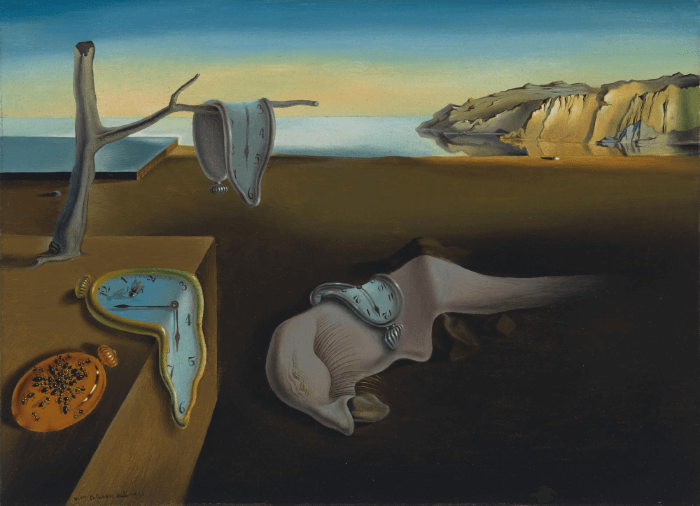
In my view, all elements in The Persistence of Memory are intricately tied to the theme of time in one way or another.
The melting clocks might symbolise the malleability and subjective nature of time, as well as Dali’s rejection of the notion that time flows linearly, aligning with philosophical ideas that time’s passage is an illusion shaped by human perception. The clocks’ melting appearance may also reflect entropy increases, leading to irreversible disorder.
The metallic watch swarmed by ants further supports the theme of decay and the inevitability of entropy. Ants, drawn to organic decay, serve as a metaphor for the gradual breakdown of all systems in the universe, driven by the thermodynamic and cosmological arrows of time. Similarly, the central disfigured figure, often thought to represent Dalí himself, portrays the inescapable effects of entropy on human life. Over time, even our highly organised bodies succumb to disintegration, reinforcing the inevitability of decay and death.
The barren landscape intensifies this theme, presenting a world where time appears frozen and devoid of life. The lifeless tree, barren terrain, and silent sky evoke a sense of timeless desolation, where entropy has culminated in complete stillness. Other symbolic elements, such as the fly on the melting clock, the mirror, and the egg, deepen the painting’s exploration of time.
Finally, time in dreams and past memories is often distorted, with durations feeling either compressed or elongated compared to reality. Dalí may be hinting that our experience of time—whether in waking life, dreams, or memory—is illusory and shaped by our psychological perception.
Ultimately, The Persistence of Memory masterfully weaves symbols of entropy, decay, and subjective time, inviting viewers to reflect on the malleable and transient nature of existence.
Let’s explore these points in detail, after learning some interesting ideas about the meaning of time.
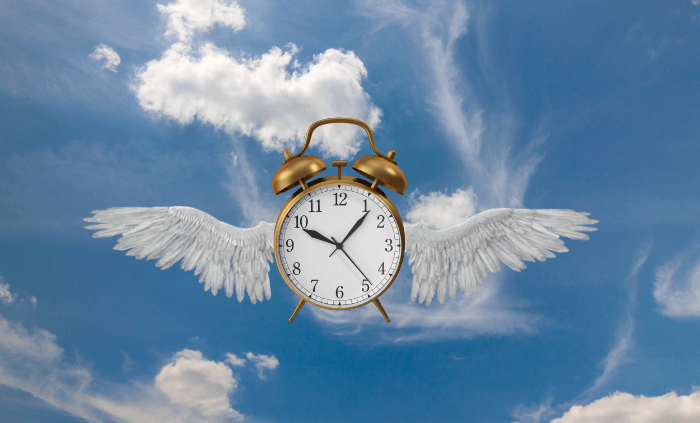
Our daily experiences certainly give us the impression that time is flowing. Nobody really questions that the past is what has already happened, the present is what is happening at this precise moment and the future is what it still has to happen.
This simple and straightforward description of time is intuitive, and most of you will say even self-evident. Time is a given, no reason to complicate matters.
Well, a few philosophers, physicists and neuroscientists will disagree with this definition of time. In fact, some will even tell you that time is nothing but an illusion.
That’s not me saying it.
Albert Einstein wrote to one of his friends:
“The past, present and future are only illusions, even if stubborn ones”.
Albert Einstein
To understand what Einstein meant by it, let’s take a closer look at what we mean by time.
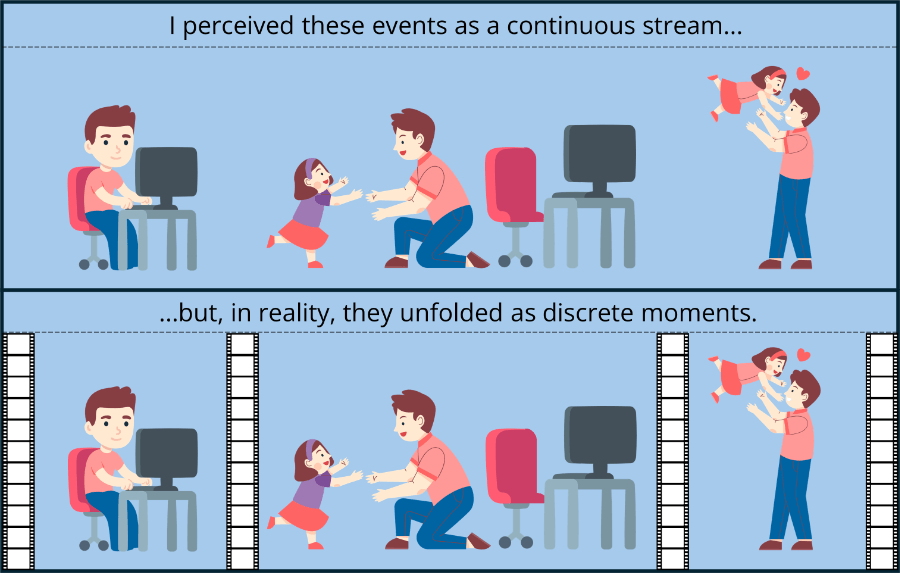
Before tackling the issue of why time may be an illusion, consider this event I just experienced.
I was sitting on my desk writing this article up, when I heard my youngest daughter calling my name and running towards me. I turned around, saw her and picked her up, and now we are playing together.
To me, these sequence of events, from writing the article on my computer to playing with my daughter, unfolded very smoothly in my mind, and I didn’t question that time flowed from one to the next event as a continuous stream.
However, is my perception of time flowing accurate? Well, some may argue that those events are actually discrete, each happening at a specific location in space and at a particular moment in time.
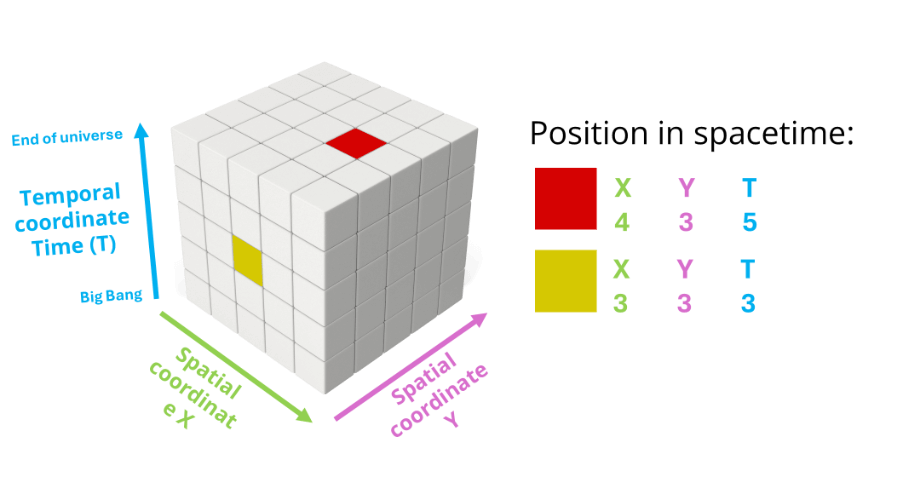
You may have heard that our universe is four-dimensional. That is because in order to specify an event we need to know the three coordinates of space, as well as the coordinate of time.
So, we can think of the universe as being the complete set of all events (i.e., every point in space at every moment in time), what some scientists call the Block universe (see below).
Thinking of the universe as consisting of four-dimensional space highlights the point that these different event “configurations” do not happen simultaneously. We experience one configuration (e.g., me working on the computer), and then another (e.g., me hearing my daughter calling my name), and another (e.g., me directing my attention to my daughter), and so forth.

A good analogy to how the world exists is like the different frames of a film reel. A film is nothing more than discrete frames put together in a specified sequence. We see each frame separately, but our brains seamlessly connect these frames, creating the illusion of a smooth, continuous motion rather than a series of discrete, static images. But, just as this continuity is an illusion created by our brains, so is our perception of time.
But, if the flow of time is an illusion, how are we able to distinguish past from future? Clearly, we experience something that has happened to be the past, and we cannot really see the future, so…?

The answer to the question why we perceive time passing, is due to something called an “arrow of time”. Physicists more or less agree that there are at least three arrows of time, which, in combination, gives us the feeling of time flowing. So let’s take a look at them in turn.
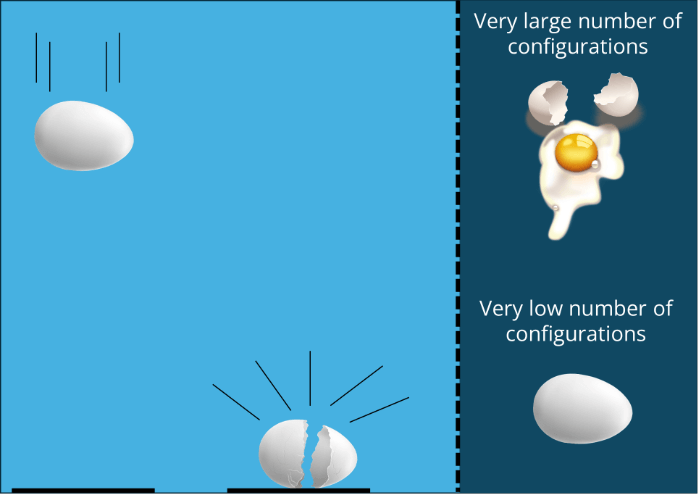
If you drop an egg on the floor, there is only one result: the egg breaks. Have you ever experienced the reverse process, in which a broken egg spontaneously becomes intact? I’m sure you haven’t, and the reason you haven’t is because of something called the second law of thermodynamics.
This mouthful of a law states that, in an isolated system, disorder will tend to increase over time. Physicists call this disorder, entropy, and it simply means that the energy and particles of a system (e.g., the egg) are more disordered and spread out.
Why is entropy (disorder) larger in a broken egg than an intact one? It all has to do with probability.
After breaking, there are way more possible configurations of broken egg shells on the floor, than there are configurations in which the egg parts recombine into an intact egg. In a way, “higher entropy” is sort of equivalent to “higher probability”.
So, for natural processes such as eggs falling to the ground, entropy always increases, and unless you inject a good amount of energy, they won’t become more ordered spontaneously.
In summary, the thermodynamic arrow of time is simply the direction of time in which entropy increases.
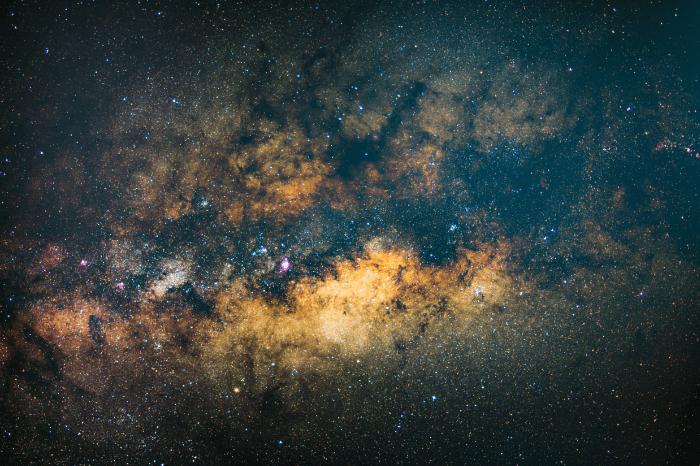
It is now widely accepted that the universe is expanding away from the Big Bang. Indeed, ever since the Big Bang, galaxies have been moving away from each other, and the universe is becoming more spread out.
This “spreading out” causes entropy to increase, because energy becomes less concentrated, less organised, and more dispersed over a larger space.
So, the cosmological arrow of time is simply the direction of time in which the universe expands.

The psychological arrow of time is what gives us the perception of time flowing.
The reason you perceive time as flowing forward – from past, towards the future – is because you form memories of the past.
For example, I’m typing this text right now, but I remember that a few seconds ago I just sipped a cuppa. Because I remember drinking tea, I know this has happened in my past relative to the present moment. So, our perception of time flowing is directly related to our past memories.
Also, you cannot really remember the future. We might conceive the future by imagining it in the present, but we can never experience a future event.
So, the psychological arrow of time is simply the direction of time in which we remember the past but not the future.
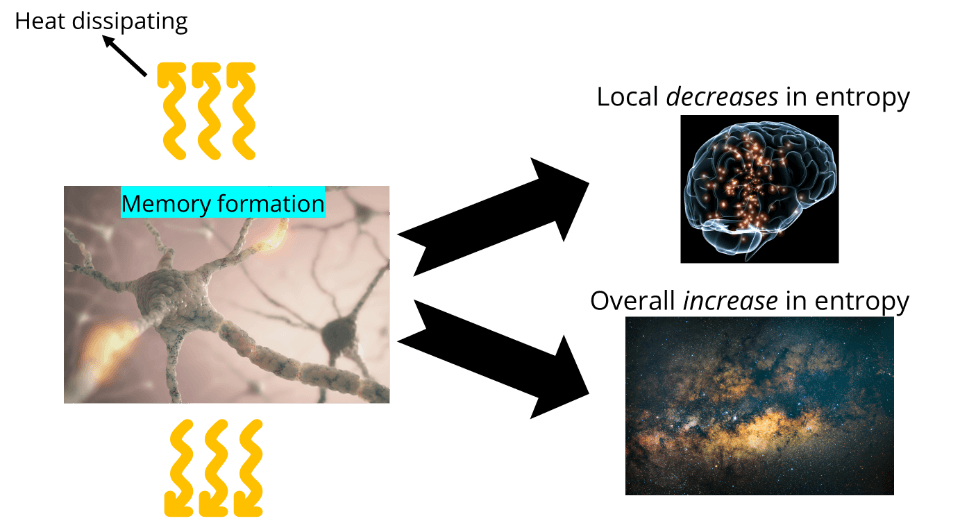
Memories are, of course, created by the brain. Neurons fire in synchrony, more synapses are formed, brain regions communicate more efficiently. All of these phenomena are contributing to the formation of memories.
But… hang on a minute! I just told you that time flows in the direction of higher entropy.
However, memory formation doesn’t sound like entropy is increasing, does it?
If anything, memory formation should entail the exact opposite, i.e. entropy decreasing. After all, it would seem that memories are more ordered types of information than random neuronal firing.
Right. The problem is that forming a memory requires energy, and while much of that energy is used to organise neural connections, some is inevitably lost as heat. This heat dissipates into the surroundings, contributing to an overall increase in entropy in the universe.
Critically, the increase in entropy due to heat dissipation is greater than the decrease in local entropy of the memory (see figure above).
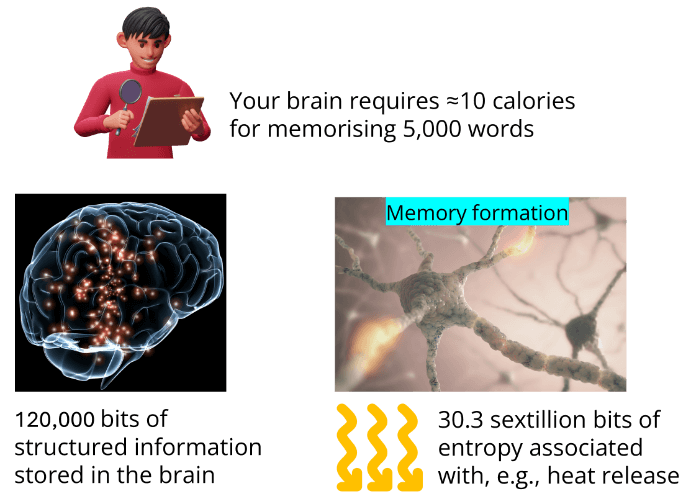
Let’s have an example to give all of this a bit of context.
Say that you are reading this article and have managed to memorize every single word of it. There are about 5,000 words, so that will be equivalent to 120,000 bits of information. This means the order in your brain has increased by about 120,000 units.
That might sound like a lot until you consider that the neurons involved in forming this memory required about 10 calories of energy, which corresponds to around 30,300,000,000,000,000,000,000 bits of potential energy. However, only a small fraction of this energy is used to encode the memory, while the vast majority is dissipated as heat, contributing to the overall increase in entropy in the universe. That’s an unimaginably vast amount of entropy compared to the tiny fraction of order created in your brain to store this memory.
Still, you might argue that the dissipated heat energy might still be reused and turned into ordered energy somewhere, right? So if we capture and recycle all the lost heat energy, we could potentially stop entropy to increase.
Well, the problem is that energy released as heat gradually loses its ability to do work. As heat energy spreads out, the temperature difference is insufficient to exploit heat energy to perform useful work. You could argue, that maybe we can harness that waste energy into useful energy. But, again, you would require to run additional machinery, which would itself generate more useless energy.
There is a sobering conclusion to this, dear readers: the universe is in an inevitable motion towards total entropy. It doesn’t matter how much work you place to keep things in order. That work requires energy, and the amount of heat released will always exceed the increase in local order.
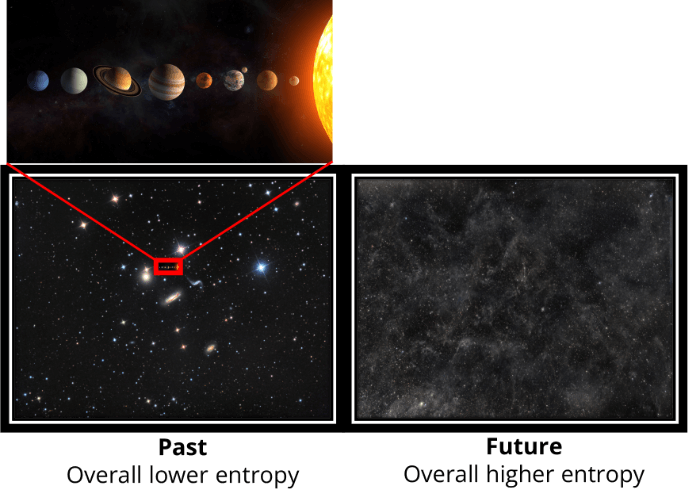
Within a Block universe interpretation of time, past, present and future are equally real – these are not illusions. The thermodynamic arrow of time provides an objective framework for understanding the unidirectional flow of time. If you tracked the overall amount of entropy at a particular moment in time and the next one, you could determine which of these two events is past and which is future, relative to one another. At the scale of the universe, past is always associated with lower entropy and future is always associated with higher entropy.
However, we are surrounded by local decreases in entropy. For example, ice forming when water is exposed to cold; clouds forming in the sky; objects created by humans; etc.
Crucially, we don’t experience time moving backwards whenever we encounter such local decreases in entropy. But why not? If increased entropy signals time moving forward, shouldn’t decrease entropy signal time moving backwards?
Well, the reason why we don’t experience time moving backwards is due to cause-effect relationships. In our universe, causes always precede effects, and this awareness gives us a sense of time moving forward. So, even though we cannot feel entropy increasing at the scale of the universe, we associate higher entropic events to effects under normal circumstances, for example, if an egg falls (cause) it will break (effect).
If we witness local decreases in our environment (e.g., ice forming; the effect), we still know they are due to some external inputs of energy (e.g., the weather is very cold; the cause).

In order to experience flow, there must be an experience in the past that merges into an experience of the present which itself merges into an experience of the future. That is literally the definition of flow “something moving into something else in a steady stream”.
Explaining an experience in the present is easy. It is literally every second of your conscious life – when you are conscious, you are experiencing the present.
You might think that an experience in the past is also easily describable, since you have memories of your past (what you were just doing a second ago, that delicious meal you ate yesterday, or the memory of having hurt your knee on your first bike ride).
The issue is that you are invoking past memories as they are being experienced right now. In fact, I’m sure there wasn’t a single time in which you have recalled memories that weren’t done in the present.
Similarly, even though you can anticipate future events with a high degree of accuracy, you can never really experience a future event as is.
Alas, the past and the future aren’t really experienced in the past and in the future, respectively, they are only experienced in the present. If so, we cannot really say that we are experiencing the flow of time, because there is no flow from past into the present into future; we are only experiencing present moments.
This is the reason why you might hear that the perception of the passage of time is only an illusion. It’s an illusion, because there is no way you can experience moving from past to present into the future. There are only snapshots of present moments.

The conclusion many scholars have reached is that perhaps the universe already contains all moments, both past, present and future laid out. According to this theory, the Block universe theory, time is simply an extra dimension, pretty much like the 3 spatial dimensions.
You might rightfully wonder that if past, present and future events are already delineated in this block universe, why can’t we remember the future then? Why can’t we jump to some past event, like we can jump to a specific spatial coordinate?
The answer is in how our brains work. Humans evolved to experience events in, and recall past events from, the present. Evolution didn’t deem it necessary that we access the future.
Could a being potentially exist that would have access to all of the Block? Theoretically, there is no reason why not. This being would essentially be able to “see” all past, present and future events simultaneously, even though it would probably not be able to change any of them.
So, we cannot “remember” the future because our brains have evolved to process time linearly. However, according to the Block universe, the time-scape is all there – past, present and future.

The premise of my analysis below is that all elements in The Persistence of Memory are all somewhat related to time. Let’s consider them one by one.
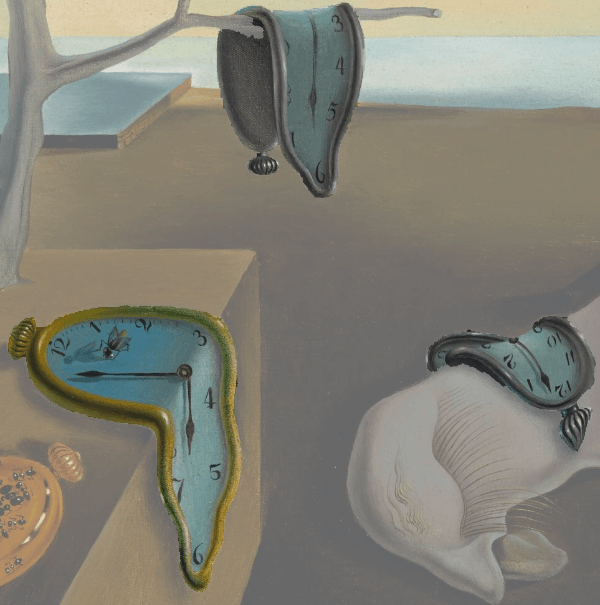
No doubt that the most intriguing elements of the painting are the melting clocks. I read some interpretations that suggested Dali might have painted the clocks as a sort of homage to Einstein’s Theory of Relativity.
However, that is unlikely to be true, as Dali himself has been on record saying that the soft watches were not inspired by Einstein’s theory, but instead by the surrealist perception of a Camembert melting in the sun.
Still, even though Dali did not make his views on time explicit, it is known that he had a penchant for physics, and was certainly aware of Einstein’s proposal that time isn’t rigid, but rather experienced subjectively.
For that reason, one of the favoured interpretations among art pundits is that the melting clocks represent Dali’s denial that time moves in one single direction, but, in contrast, time as typically defined is nothing but an illusion.
If you read the section on time, this should resonate with you. Some philosophers indeed suggest that the perception of time flowing is an illusion created by our brains. Indeed, the impression that time is passing is simply a consequence of the psychological arrow of time, which allows us to recall past memories but not future ones.
As I explained above, the psychological arrow of time is aligned with the thermodynamic arrow of time, in the sense that we perceive events in a sequence consistent with increasing entropy.
And that’s how I like to think about the melting clocks: as a depiction of increased entropy. The melting clocks in the sun aren’t spontaneously going to reverse to being clocks. Dali added extra dynamism to this scene, because it appears Disorder is hitting them in a way that follows the second law of thermodynamics: entropy of an isolated system always tends to increase.
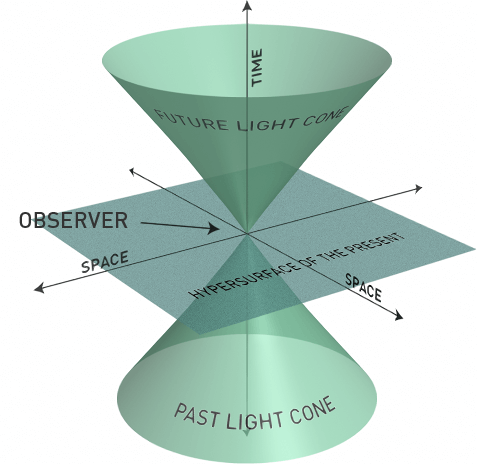
Another way to think about it is that the melting away in the sun is a metaphor for the illusion of time. Time isn’t fixed, but rather malleable, just like the melting clock’s pliable consistency.
Perhaps this is where the idea that The Persistence of Memory is related to the Theory of Relativity comes in. Remember your physics class? Time is relative, my clock on planet Earth will move slower than your clock near a black hole. My clock will tick slower at a jogging pace than your clock when moving at near light speed.
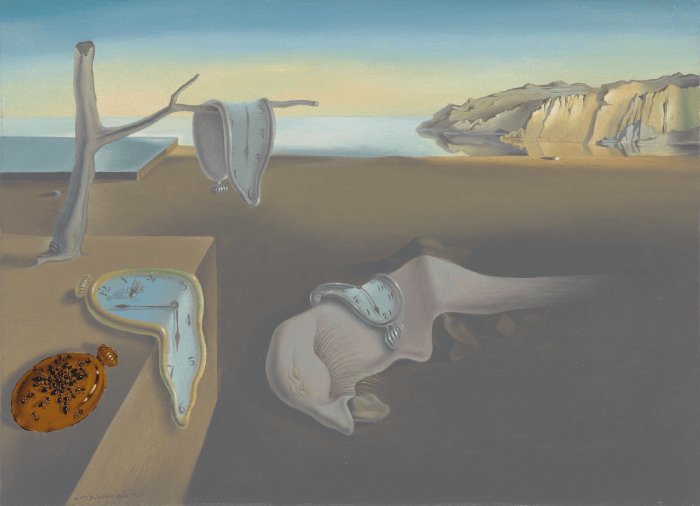
It is interesting that Dali chose to depict ants over a metallic watch. Ants are naturally attracted to decaying organic matter, so this element in the Persistence of Memory is usually understood as representing decay and death.
The fact that the ants are devouring the watch, again, seems to suggest the move towards a more disordered state. Ultimately, everything in the universe will decay. Both the thermodynamic and cosmological and arrows of time ensure that energy and matter gradually become more entropic (disordered) and dispersed over large distances.
This means that decay and subsequent death is inevitable.
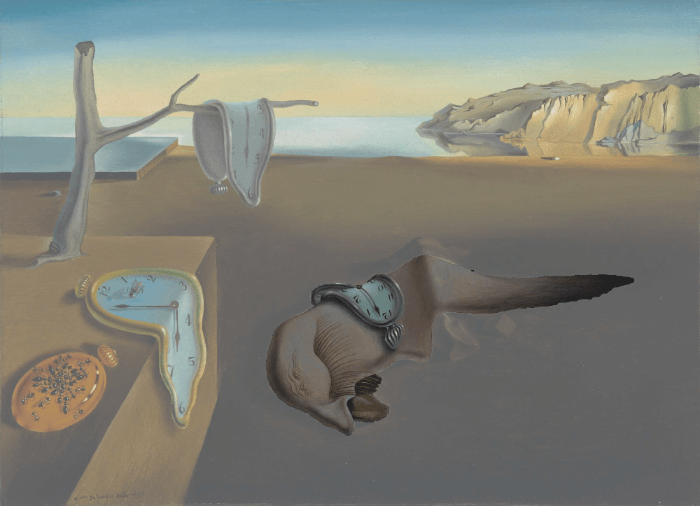
The central figure in The Persistence of Memory has been interpreted as being Dali himself. The figure is distorted, and looks like it is itself melting away.
To me, this suggests that even humans cannot escape the effects of increased entropy. We are not eternal: we grow older, our bodies decay, and we eventually die.
Once again, all I have described above is simply entropy increasing. Our bodies consist of cells, molecules and atoms, which are highly organized into a coherent structure. However, over time, that structure starts to break apart, because, put it bluntly, it simply is a more probable state for our molecules and atoms to be in.
And this is what Dali captured with this disfigured entity: that we are all subjected to the effects of entropy.
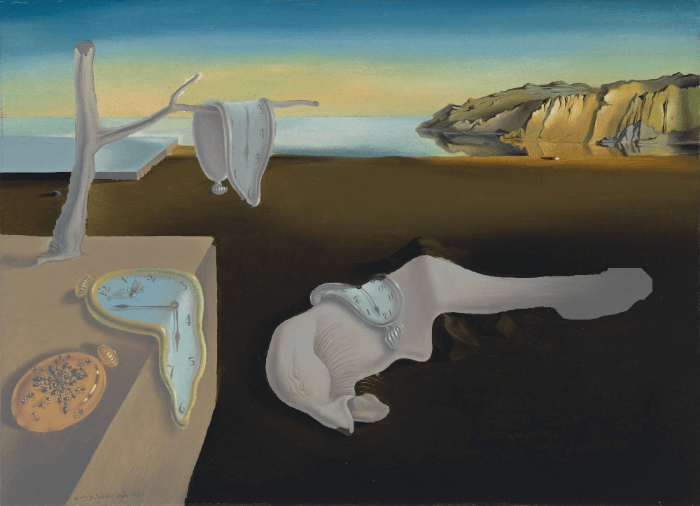
By now, the message of the painting should be clear to you.
And another element that appears to corroborate this idea that entropy increases leading to decay and death is the barren landscape.
Note, how the tree seems devoid of life – the trunk has been cut in half, only one branch survived, and there are no leaves or flowers. Similarly, the terrain is uniform with no sign of fauna or flora. The sky is deadly calm, and the sea is almost like a blank canvas.
In other words, the entire landscape gives the impression that time froze. I can imagine stepping into this world and not hearing a single tone, only emptiness.
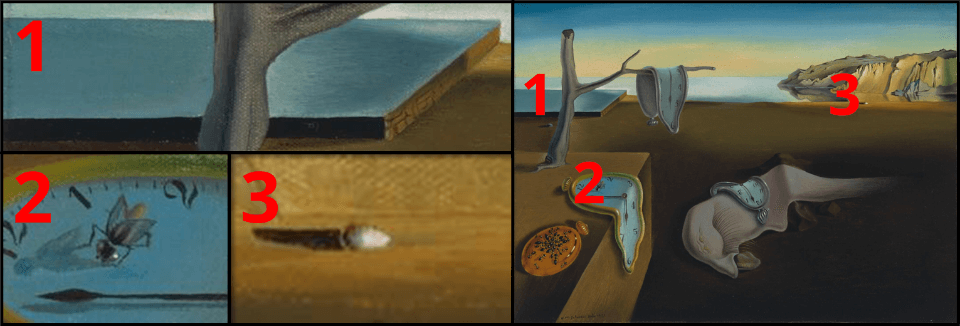
Three additional elements are worth mentioning: the fly on the melting clock on the table; the mirror behind the dead tree; and the egg on the top right near the rocky mountains.
It is possible that Dalí added the fly either as a metaphor for time “flying” or as another symbol of decay, as flies tend to be attracted to rotting organic material as well.
The mirror has often multiple symbolisms. Here, it could symbolise distortion of reality, as it occurs in dreams and memories.
Finally the egg is a recurring motif in Dalí’s works, and it is usually a symbol of rebirth. It is interesting that Dalí chose to add the corpse and devouring ants, both symbols of death, as well as the egg, a symbol of life, on the same setting. This may suggest that life and death exist in a timeless world, where past, present and future are all real and exist simultaneously, an idea not too dissimilar to the Block universe proposal I briefly described above.

There has been some suggestions that the central figure is in a sort of dream state.
One interesting aspect of dreaming is that the perception of time can become distorted in dreams. Some experiments have been conducted in which the experimentor awoke participants who were going through REM sleep (the sleep cycle during which we are more likely to dream) and asked them to estimate how long they believed their dreams lasted. In many cases, participants reported of feeling that their dreams took longer than they actually were.
Even though this result is still up for debate, you might have had this experience yourself. For instance, you might have had a very long conversation with someone and then going out with that someone, taking the train, and arriving at a different place. That would probably take several hours in real life, but we only spend about 90 minutes in REM sleep. In other words, time seemed to be compressed (or sometimes dilated) during dreaming, so we tend to over/underestimate the duration of events in dreams.
The reason I’m mentioning this is because it suggests that, once again, time perception is highly subjective. Time isn’t fixed, and this is especially true in dreams, where time perception changes depending on the content of dreams.
Similarly, memories aren’t facsimiles of actual experienced events. We often confabulate certain elements which weren’t present in the original event, and we might also distort the duration of a recalled event.
Dali may be indirectly pointing out that time perception during dreaming or memory recall are subjective and illusory… persistently so.
Salvador Dalí’s The Persistence of Memory explores the nature of time through surrealist symbolism. The melting clocks, inspired by Camembert cheese, symbolise time’s malleability and the illusion of its linear flow. They also reflect entropy, with their melting representing the irreversible increase of disorder.
Other elements reinforce this theme: ants devouring a metallic watch symbolize decay, the central disfigured figure portrays humanity’s inevitable submission to entropy, and the barren landscape evokes a timeless, lifeless state where entropy has culminated. Contrasting this, the egg, a symbol of rebirth, suggests the coexistence of life and death in a timeless framework, akin to the Block Universe theory, where all moments exist simultaneously.
Dalí also hints at the subjective experience of time. In dreams, time feels distorted, compressed, or stretched, while memories are similarly unreliable, with altered perception of time. The painting invites reflection on time’s illusory and transient nature, shaped by human perception.
Personally, The Persistence of Memory isn’t my favourite work by Dalí. I found it amusing rather than brimming with symbolism which is characteristic of some of Dalí’s most impressive works. Nevertheless, I acknowledge that it fully deserves the spot of the masterwork of surrealistic masterworks.
And to this day, it persists…
Masterpiece
I must say you are the most creative reviewer of film and art I have read, I never would have connected Dali’s painting with the Second Law of Thermodynamics. Good Job!
To be honest, I realized that the painting had something to do with time, and I sensed the message also had something to do with dying, but I would not have been cleaver enough to bring in entropy. Nonetheless, your explanation does make sense.
Hi David,
Wow, many thanks for the compliment!
To be fair though, the ideas I put forth in my articles have been, in some form or another, already touched upon out there. I simply expand on these ideas and maybe add a slight personal touch 😉
But, really, many thanks for the comment – it’s comments like yours that give me the motivation to keep writing articles like these 😀